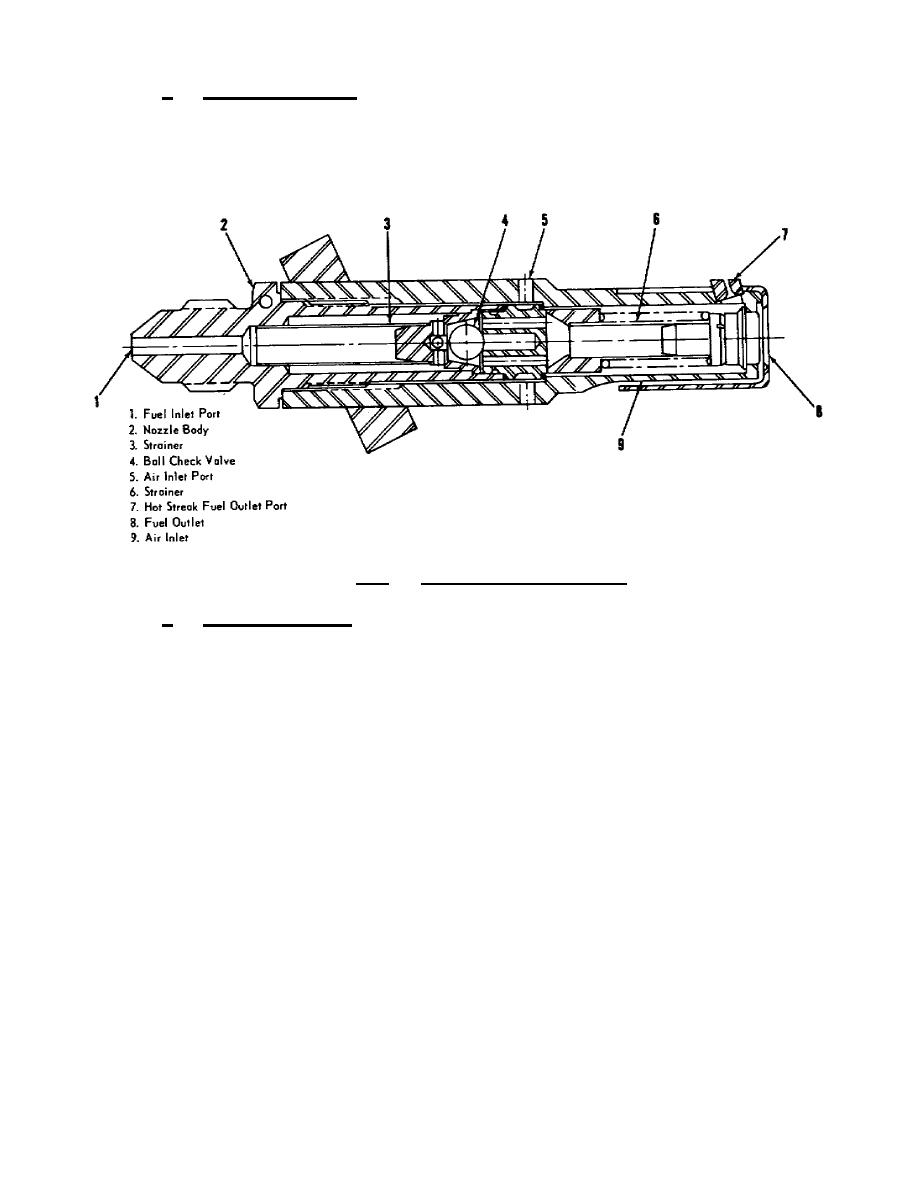
a. Simplex nozzle. Figure 2.4 illustrates a typical simplex
nozzle; as its name implies, it is simpler in design than the duplex
nozzle. Its big disadvantage lies in the fact that a single orifice
cannot provide a satisfactory spray pattern with the changes in fuel
pressure.
Figure 2.4. Simplex Fuel Nozzle.
b. Duplex nozzle. Because the fuelflow divider and the
duplex nozzle work hand in hand, the description of these units is
combined. The chief advantage of the duplex nozzle is its ability to
provide good fuel atomization and proper spray pattern at all fuel
pressures. For the duplex nozzle to work, there must be a fuelflow
divider to separate the fuel into low (primary) and high (secondary)
pressure supplies. Singleentry duplex nozzles have an internal flow
divider and require only a single fuel manifold, while, as shown in
figure 2.5, dualentry fuel nozzles require a double fuel manifold.
The flow divider, whether selfcontained in each nozzle, or installed
separately with the manifold, is usually a springloaded valve set to
open at a specific fuel pressure. When the pressure is below this
value, the flow divider directs fuel to the primary manifold.
Pressures above this value cause the valve to open and fuel is
allowed to flow in both manifolds. A fuel flow divider is shown in
figure 2.6.
In addition, an air shroud surrounding the nozzle, as
shown in figure 2.7, cools the nozzle tip and improves combustion by
retarding the accumulation of carbon deposits on the face. The
shroud also helps to contain the flame in the center of the liner.
53



 Previous Page
Previous Page
